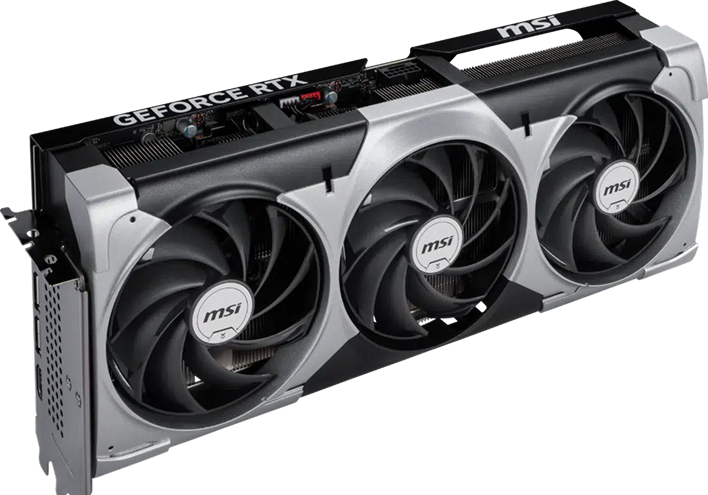
NVIDIA RTX 5070 vs. RTX 4070
The NVIDIA RTX 5070 and RTX 4070 graphics cards cater to gamers and creators looking to balance performance and price. With the RTX 5070 powered by NVIDIA’s Blackwell architecture, it introduces significant advancements compared to the RTX 4070, built on the Ada Lovelace architecture. This article focuses exclusively on the differences between these two GPUs, examining specifics like architecture, performance, memory, and AI features.
PRO TIP: Check out our Nvidia 5070 PC Builder where you can Customize your PC
Specifications Overview
| Specification | RTX 5070 | RTX 4070 |
|---|---|---|
| Architecture | NVIDIA Blackwell |
NVIDIA Ada Lovelace |
| CUDA Cores | 6,144 |
5,888 |
| Boost Clock Speed | 2.51 GHz |
2.48 GHz |
| Memory Configuration | 12 GB GDDR7 |
12 GB GDDR6 |
| Memory Bandwidth | 768 GB/s |
504 GB/s |
| Ray Tracing Cores | 4th Gen |
3rd Gen |
| Tensor Cores (AI) | 5th Gen (988 AI TOPS) |
4th Gen (466 AI TOPS) |
| DLSS Version | DLSS 4 |
DLSS 3.5 |
| Total Graphics Power | 250W |
200W |
| Starting Price | $549 |
$549 |
Key Takeaways:
- Blackwell architecture powers the RTX 5070 and offers better energy management, advanced AI rendering, and superior ray tracing than Ada Lovelace.
- The RTX 5070 features GDDR7 memory, enabling faster bandwidth compared to the RTX 4070’s GDDR6.
Architecture Comparison
| Feature | RTX 5070 (Blackwell) | RTX 4070 (Ada Lovelace) |
|---|---|---|
| Neural Shaders | Optimized for AI rendering |
Standard Shader Programs |
| Tensor Cores | 5th Gen (988 AI TOPS) |
4th Gen (466 AI TOPS) |
| Ray Tracing Cores | 4th Gen – Superior lighting |
3rd Gen – Efficient but less detailed |
Key Highlights:
The RTX 5070 benefits from NVIDIA’s Blackwell architecture, which introduces AI-enhanced ray tracing with more realistic lighting and shadows. Additionally, its Tensor cores double the AI performance capacity, making it ideal for creative applications and modern gaming.
Performance Comparison
| Performance Metric | RTX 5070 | RTX 4070 | Difference |
|---|---|---|---|
| CUDA Cores | 6,144 |
5,888 |
+256 |
| Boost Clock Speed | 2.51 GHz |
2.48 GHz |
+0.03 GHz |
| Memory Bandwidth | 768 GB/s |
504 GB/s |
+264 GB/s |
Analysis:
The RTX 5070 delivers slightly higher CUDA core counts and clock speeds, enabling better multitasking and rendering performance. Its 768 GB/s bandwidth, thanks to GDDR7 memory, ensures faster data throughput, especially when handling high-resolution textures and workloads.
Memory and DLSS Advancements
| Feature | RTX 5070 – GDDR7 + DLSS 4 | RTX 4070 – GDDR6 + DLSS 3.5 |
|---|---|---|
| Memory Type | GDDR7 |
GDDR6 |
| Memory Bandwidth | 768 GB/s |
504 GB/s |
| DLSS Version | DLSS 4 |
DLSS 3.5 |
| Frame Generation | Multi-Frame Generation (4X AI frames) |
Single-Frame Generation (1 AI frame) |
| Ray Reconstruction | AI-powered for enhanced visuals |
Standard ray tracing |
Benefits of the RTX 5070:
- GDDR7 memory boosts data processing speeds, making load times for large assets and 4K gaming much faster than what GDDR6 can achieve.
- DLSS 4 enables multi-frame generation, a game-changer for increasing frame rates and improving visual fidelity during gameplay.
Energy Efficiency and Thermals
| Energy Metric | RTX 5070 | RTX 4070 |
|---|---|---|
| TDP (Watts) | 250W |
200W |
| Cooling Efficiency | Superior airflow |
Efficient |
| Maximum Temperature | 85°C |
90°C |
Observations:
Although the RTX 5070 has a higher Total Design Power (TDP), enhanced cooling design ensures it stays cooler under heavy workloads. This is ideal for extended gaming or creative sessions without sacrificing performance.
Price-to-Performance Ratio
| Category | RTX 5070 | RTX 4070 |
|---|---|---|
| Performance-Per-Dollar | Higher |
Moderate |
| Starting Price | $549 |
$549 |
At the same price, the RTX 5070 delivers better performance-per-dollar than the RTX 4070, making it the superior choice for gamers and creators looking to future-proof their setups.
Summary – Which GPU Should You Choose?
| User Type | Recommendation |
|---|---|
| Gamers | RTX 5070 for faster frames with DLSS 4 |
| Creators | RTX 5070 for advanced Neural AI features |
| Budget Users | Either, but RTX 5070 is more future-proof |
Final Verdict:
The NVIDIA RTX 5070 emerges as the smarter choice for both gaming and creative workflows, thanks to its next-generation Blackwell architecture, GDDR7 memory, and DLSS 4 technologies. While the RTX 4070 still delivers solid performance, the 5070 sets a new standard for mid-tier GPUs at the same price point, ensuring a better value for long-term use.

